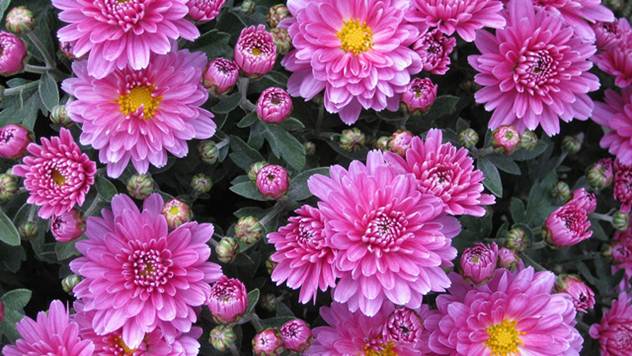Chrysanthemums are very popular autumn flowers, and in our area they are used to decorate yards and terraces. However, in addition to beauty, they carry many useful properties; they are medicinal, edible, can be used as a spice, and are associated with a lot of symbolism and historical facts that you probably didn’t know about.
One of the things we all look forward to in autumn is the beauty of blooming chrysanthemums. Even walking down the street can bring a sense of elation if you see them. Many, who love and grow chrysanthemums in their gardens or terraces, do not know how much they really are useful plants with a long and rich history.
Chrysanthemum symbolism
Chrysanthemums are grown for an incredibly long time. They were originally grown in China, and the first written records date back to the 15th century BC.
In Chinese culture, the chrysanthemum represents one of the four flowers that most often mentioned in Chinese myths and songs. Camellia, lotus, chrysanthemum and peony represent flowers that are often seen in their paintings and in decorative arts.
Each flower is associated with a season – camellia with winter, peony with spring, lotus with summer and chrysanthemum with autumn. This group of flowers is also known as the “Flowers of the Four Ages”, and they also represent human virtues. The chrysanthemum is a symbol of nobility.
The symbolism of the chrysanthemum is completely different depending on the part of the world. For example, in most parts of the United States chrysanthemums are associated with joy and optimism.
In Japan, the flower has been used as an imperial coat of arms for more than 1,200 years, and every September 9 is celebrated as National Chrysanthemum Day, also known as festival of happiness.
However, in many European countries, including France, Belgium and Spain, chrysanthemums associated with death and can often be seen on graves in honor of the dead.
Medicinal properties of chrysanthemums
Chrysanthemums are used for medicinal purposes in China over 2000 years. Due to their numerous positive properties, they initially had an almost mythical status. Chrysanthemum tea, which is still used today to prevent infectionswas then considered a divine drink and could only be consumed by members of the Chinese imperial family.
The Chinese believe that tea is made from chrysanthemum petals particularly effective in the fight against bacteria, fungi and viruses, and they use it in the prevention and treatment of many infectious respiratory, intestinal, urinary and skin diseases. The boiled root serves as a remedy for headaches. All this has been confirmed by numerous scientific studies.

Chrysanthemums are edible
Dry flower heads are used for medicinal tea, and can be consumed in fresh conditionas an addition to salads. However, the leaves are also edibleand it can also be added to salads or cooked like other greens.
But do not remove leaves and flowers from chrysanthemums, unless you are one hundred percent sure that they have not been treated with any pesticides or chemicals.
They are used in natural insecticides
You may already know that chrysanthemums they can repel pesky insects like mosquitoes.
The oil extracted from the flowers of certain chrysanthemum species has been used as an insecticide for centuries. Look for pyrethrin in the ingredient list of bug sprays; it is found in chrysanthemums and fleabane and is one of the most popular ingredients in natural insecticides.
Source: BHG
Source: www.agromedia.rs


